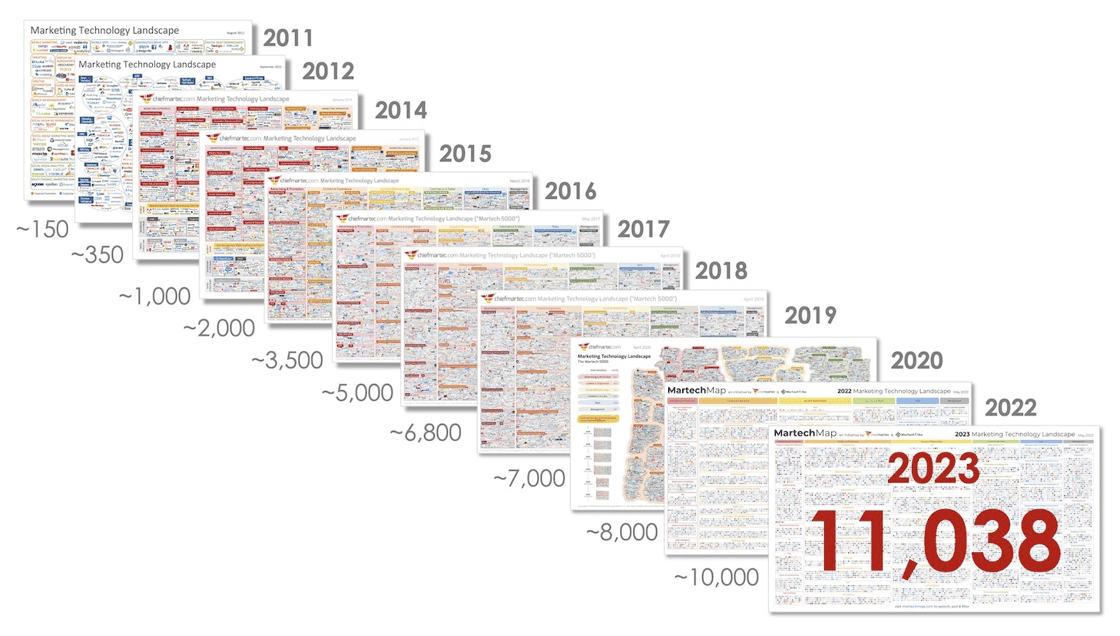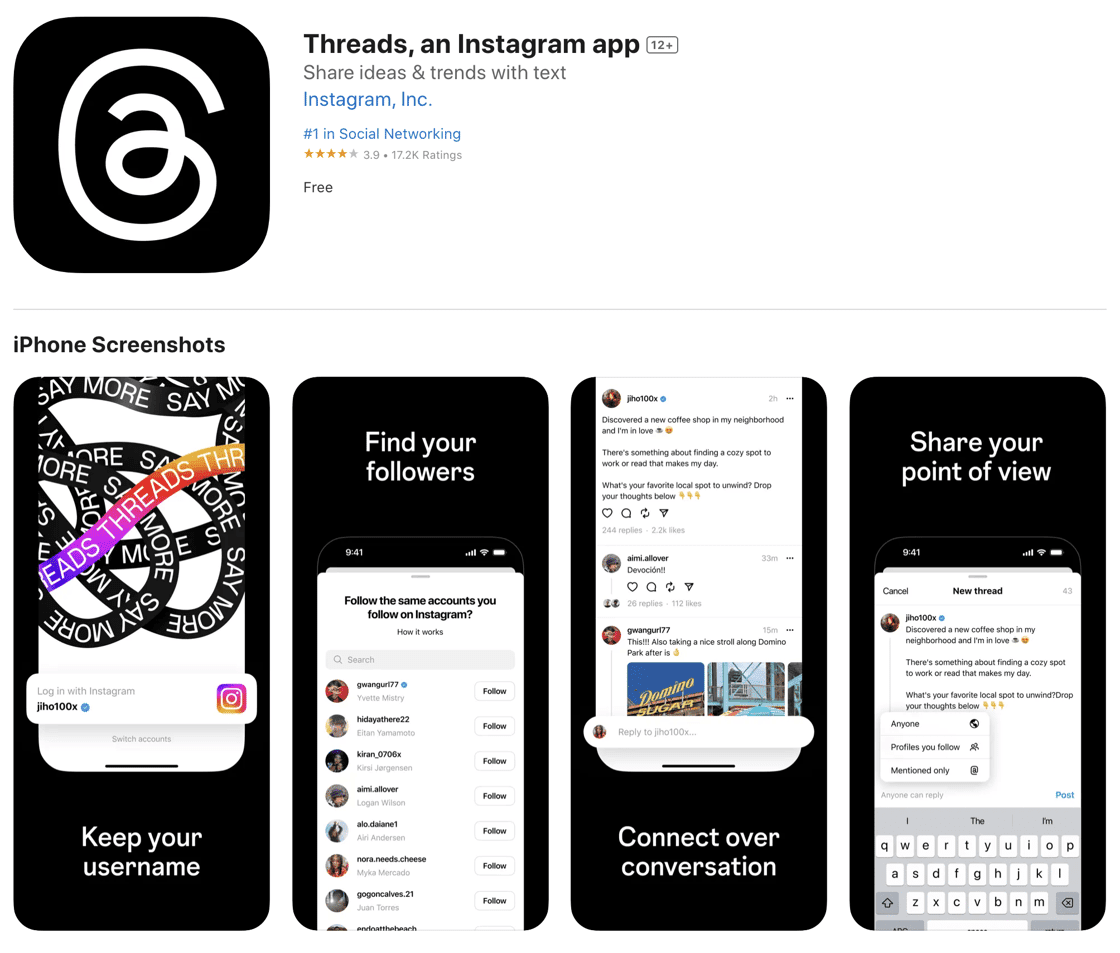We wrote last month (see Newsletter #1) about the pressure building on B2B marketing teams – from a chokehold on skills, people, and budget. Now that we’ve powered through the end of the financial year, we’ve seen conversations open up on projects and campaigns, but not as much on new headcount.
More work, fewer people – what’s not to love about that?!
We’ve also been having some very interesting conversations about the real-world implications of AI now that we have started recording our podcast (mini-series releasing in August!).
A few general themes emerging so far:
- Much hype, and much noise, but nothing beyond machine learning to build efficiency in most brands outside big tech
- The inherent bias in data is a real risk if you’re using the popular models – don’t blindly make decisions based purely on chat with Chat
- Be VERY careful where you are putting your data – it’s more important than ever to vet the tools you or your team are using
Speaking of hype and throwing data around – you may also have heard about the launch of “nice Twitter” aka Threads. It’s currently ad-free and growing rapidly. If you have had time to take a look we’d love to know what you think.
The continuing Martech nightmare – a clear strategy will tell you what to keep and what to cut

An unfocused, disjointed tech stack that your team can’t operate can really slow (or stop) your marketing momentum.
It costs more than it should, it breeds errors and inefficiency, and it typically doesn’t serve a higher strategic purpose.
A lot of this mess can be attributed to one simple factor: lack of focus.
Marketers are the worst for ‘shiny thing’ syndrome – but now more than ever it’s time to curb your enthusiasm and resist that glint on the horizon.
Why?
Well, are you aware that there are now over 11,000 tools in the martech landscape?
If you don’t keep a tight hold on the technology reins you will soon find people in your team have been “testing” new platforms just… because.
The thing is now, there just isn’t time (or much point). in testing new tools without a solid business case.
Marketing historically hasn’t required a technology roadmap, but as the role continues to require more technical support to execute effectively and efficiently, a clear vision for how technology supports your brand strategy is essential.
Without that, you’ll end up getting dragged down into the engine room duct-taping things together instead of doing the real work; building a market-leading brand.
So what should be on the radar for the remainder of this year? Three things we’ve been speaking to people about are:
Optimising CRM
It sounds obvious, but there is so much base-level efficiency to be extracted from most CRM that is just not utilised in a lot of brands.
Simple workflow like follow-ups, triggers for actions, and customer engagement can yield massive returns from a CX perspective with very little effort to deploy.
More advanced options like marketing channel integration, retargeting/remarketing, and automated lead scoring can also really accelerate key areas of your marketing and sales activity.
Building these around specific audiences, internal use cases, and KPIs will yield powerful results.
Execution of inbound activity
Inbound is still a very resource and time-intensive area of marketing, relying heavily on customer research, SEO, and content.
Creating efficient machinery to handle this part of your marketing activity is essential to ensure you’re not constantly having to divert your time to keep the production, publishing, and optimisation moving.
This is also an area that lends itself to breeding different tools and platforms like a plague, as it covers so many different requirements and skill sets.
As noted with your CRM however, deep knowledge of a small set of tools will pay dividends here by reducing context switching in your team and making the workflow much more smoothly.
Supporting events
The staple of the B2B world – EVENTS! They’re back, and they appear to be more expensive than ever.
Now we don’t have anything against events per se, however.
What we do have something against is failing to build in adequate pre, during, and post-event digital support to engage your target attendees as much as possible while they are in a focused mindset.
Utilising both previous points, events are a great source of real-world engagement, great content, and reasons to talk to people. So make sure your CRM is ready, your content machinery is primed, and your team are clear on the intended outcomes.
Speaking of shiny things… I’m excited about Threads, but not really about actually using it (yet)

So Have you posted your first thread yet?
The cynical digital marketer in us is struggling to be excited about yet another place to have to check, manage, and deathscroll our life away on.
The fascinating thing is though, they’ve built the Twitter clone, you can bring your Insta audience over straight away (a genius move to push uptake) and all they need to do is throw a lifeline to Twitter users desperately trying to escape the flaming disaster unfolding across the network.
This might be the easiest audience steal ever.
Beyond the drama (which we love), two things that have got us excited about Threads:
- It will be de-centralised – built from the same technology as Mastadon. This is a massive first for Meta. It means you won’t have to start from scratch if you want to move house in future and you can port your audience to any federated destination.
- The thought process behind releasing this app was rigorous and demonstrates (if you believe the propaganda) a change in direction for Meta apps for the better. Check out this special episode of Hard Fork as Casey and Kevin interrupt their holidays to interview Adam Mosseri, Head of Instagram about why Threads is here.
After the glory days driving social media into the essential piece of daily life it is now, through the years of ruining it and our lives with horribly engineered algorithms, Threads could be Meta’s redemption story.
So the big question is, should you join?
Well, that depends.
Personally – if you’re happy to power through the initial rush and associated noise to experience the app ad-free and (relatively) algo free, then get in there. The UI is pretty cool, it works well (unlike Twitter right now) and there’s a lot to like about it.
Professionally – I’d wait and see. We’ve never advocated creating more work for highly speculative results, and adding yet another social media channel to your no doubt already full mix isn’t going to deliver returns for the extra effort yet.
If Twitter (i.e. short form / live conversation) is a core part of your current channel mix, keep a close eye on Threads (as well as Mastadon, new entries like Blue Sky, the messengers) and see what happens when the commercial model inevitably drops in.
Until next time…
Thanks for reading this far!
We hope you found this interesting. We’d love to know what you would like to hear more of (or less of) and we’re always happy to chat if you would like to discuss anything.

